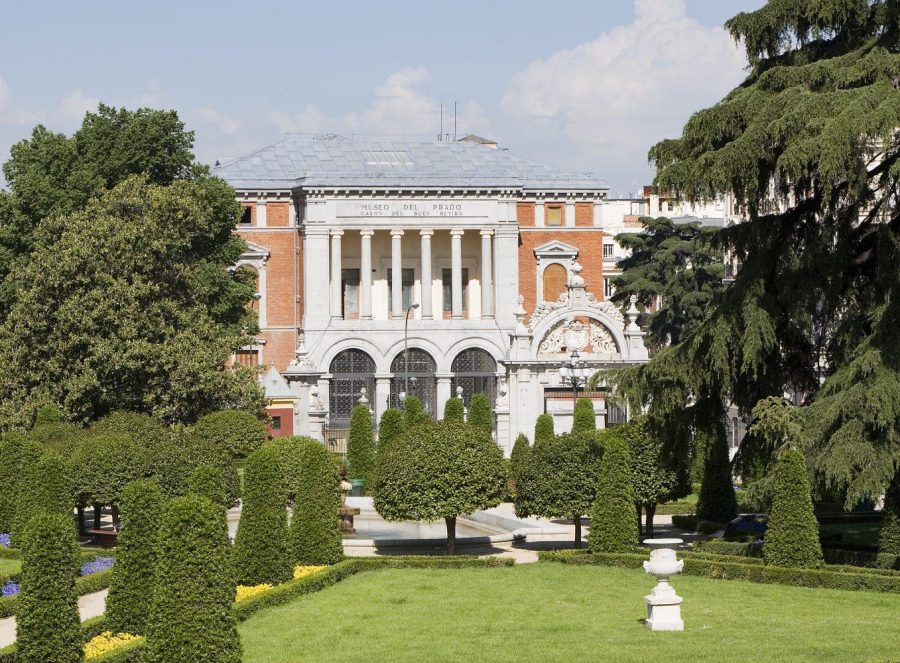The application of the Paseo del Prado and Retiro promenade in Madrid for inclusion in the Unesco World Heritage list is in the final phase. A decision will be made on Sunday.
It took four years of intensive work and preparation to demonstrate the uniqueness of this green axis in Madrid. It prides itself on being the first tree-lined promenade, or alameda, designed in a European capital.
Later, the palace and the Buen Retiro gardens were built. They are now an inseparable whole that was the centre of the Spanish Crown for more than 350 years. At the moment, Madrid City Council is preparing for the final decision on the Paisaje de la Luz (Landscape of Light) – the official name of the candidacy. The name is also a reference to the Enlightenment. The decision will be made on Sunday, 25 July.
Paseo del Prado already recognised
The municipal coordinator of the dossier, Mónica Luengo, pointed out the Paseo del Prado is already recognised for its universal and exceptional value. The inclusion of the Retiro, on the other hand, meets with objections. “We are told to include only the promenade. But we want to argue to the end that it should not be limited to one part. The Paisaje de la Luz is a combination of art, nature and science that is unique in the world”.
Atypical candidacy
“The candidacy of the promenades in Madrid is different and challenging, because it is easier to get on the Unesco list if you have something very definite, like a Gothic cathedral,” says Luengo. “But the Paisaje de la Luz is a cultural area with a wealth that is also intangible and where many parts come together. You have to have an exceptionality that is the basis of your request for Unesco recognition. Our application is exciting because it is rich and innovative. It is a human green space, a place of nature in the city that is essential to the well-being of the local population. This kind of heritage is not represented and is difficult to recognise,” explains Luengo.
The 1972 Convention for the Protection of the World Cultural and Natural Heritage stipulates certain places on the planet have ‘outstanding universal value’. This qualifies them, therefore, as part of humanity’s common heritage. Spain has been a party since 1984 – there are 165 countries that have ratified it – and has 48 registered properties. This puts Spain in the top 10 countries with Unesco World Heritage sites.
Fifth heritage site for the Madrid region
If the Paisaje de la Luz succeeds, it would be the Madrid region’s fifth heritage site on the list. Included now are the Monastery of El Escorial, the city of Alcalá de Henares, the cultural landscape of Aranjuez and the beech forest of Montejo. Unesco assesses 25 nominations each year. This year, due to the pandemic, UNESCO is assessing nominations from the past two years.
In action since 2014
“In 2014, the Madrid City Council, with Mayor Ana Botella, announced the intention to submit the candidacy of the Paseo del Prado and the Retiro. A working group was created with technicians, experts in the field and university professors to prepare the dossier” said the Director General of Cultural Heritage, Luis Lafuente.
In the first week of October 2019, Unesco representatives visited Madrid to assess the candidacy in detail. In November, a technical delegation went to the International Council on Monuments and Sites in Paris to answer questions. There was also written contact to clear up any ambiguities.
The pandemic brought the process to a halt. In the meantime, Madrid continued to work on its candidacy with a communication plan and the design of a logo.
Model of the alameda
“It is not uncommon to make the request to Unesco several times; it is difficult to meet the requirements the first time,” Luengo reports. He stresses the historical importance of el Paisaje de la Luz which made Madrid the most sustainable capital in 16th century Europe. The model of the alameda, the wide promenade, served as inspiration for other Spanish areas, such as Seville. It also travelled abroad, with examples such as the Alameda in Mexico and the Paseo de los Descalzos in Lima.
Enlightenment
The name Paisaje de la Luz is inspired by the Enlightenment. With the arrival of the royal house of Bourbon in the 18th century, Madrid transformed into an enlightened city. Its gardens were opened to all citizens, creating a space dedicated to research and the dissemination of knowledge. This led to the growth of art collections and scientific centres in the immediate vicinity. It also influenced political and economic institutions such as the Congress of Deputies, the Bank of Spain and the Spanish Royal Academy. Transport too, with the Atocha station welcoming people to the city. “It is a combination of art, nature and science that is unique in the world, not just in Europe,” Luengo concludes.
Decision with consequences
The decision will be made this weekend. For Luis Lafuente, the global recognition of the candidacy brings with it a great responsibility for its preservation. “People will start to see the Paseo del Prado in a different way, as the oldest natural urban landscape in Europe and a route in itself that will lead tourists to enjoy the Retiro as well”.


